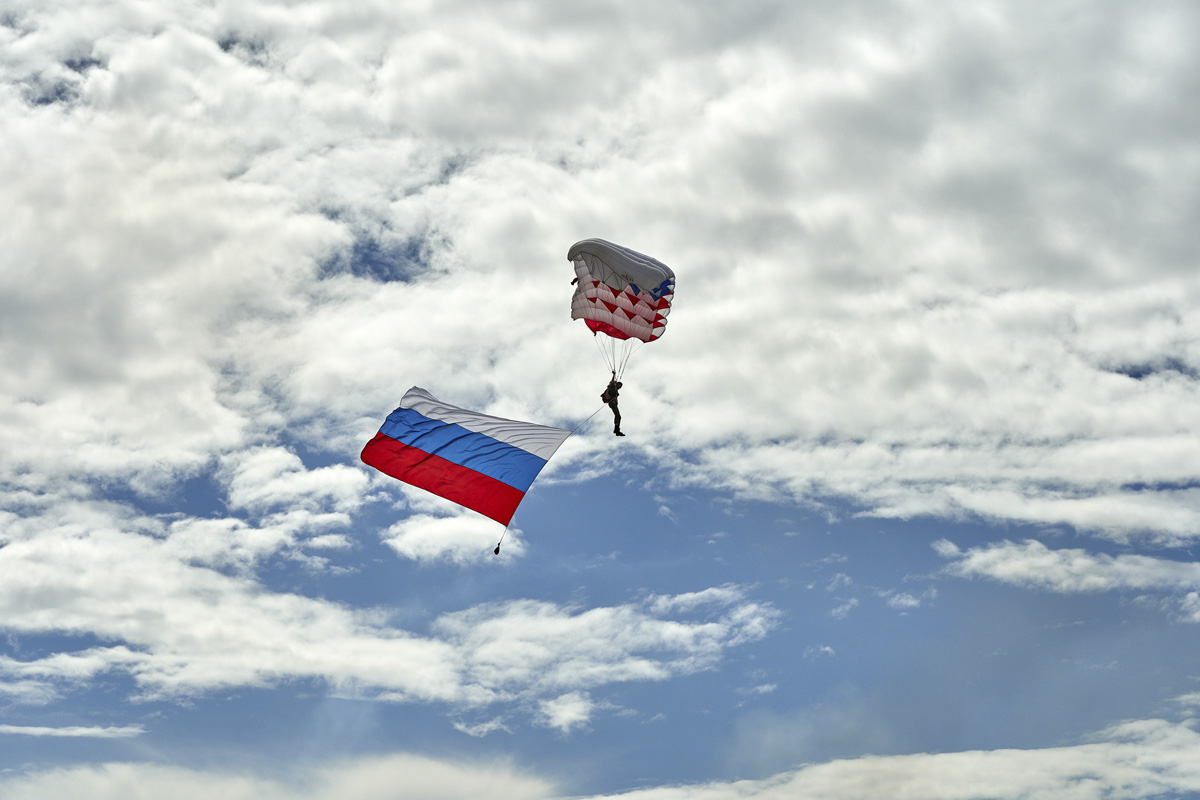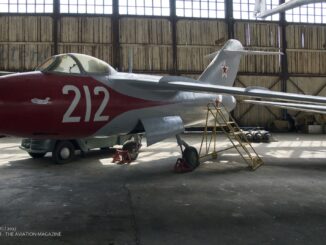 Lavochkin La-250A ´Anaconda´ (Ла-250A «Анаконда»), the fourth prototype of high-altitude interceptor, open-air exhibition at the Central Air Force Museum in Monino, July 2017.
Lavochkin La-250A ´Anaconda´ (Ла-250A «Анаконда»), the fourth prototype of high-altitude interceptor, open-air exhibition at the Central Air Force Museum in Monino, July 2017.
With continuous growth of the jet-powered aviation, that arrived in the mid-1950s, it has become necessary to change the existing concept of a fighter aircraft. Subsonic jet fighters and their onboard cannons were powerless against the new generation of strategic bombers.
In the United Kingdom there were already two new bombers in development – Avro Vulcan and Handley Page Victor – that performed their maiden flights in 1952. In the same year, but across the ocean, a project of Convair B-58 Hustler was approved and four years later completed its first flight.
Those new bombers constituted a serious problem for the Soviet anti-aircraft defence, as the British aircraft had a cruise speed of about 0,9 Ma and could fly at an altitude of 36,000 feet (the Victor) or even 45,000 feet (the Vulcan). The Hustler could fly at 63,000 feet and in addition became the first bomber able to achieve a speed of Mach 2.0. None of existing Soviet fighters available at that time – MiG-15, MiG-17 or Yak-25 – could match them.
In response to the jet bomber development, the Soviet military authorities launched a programme of complex anti-aircraft defence that included a large radar network and surface-to-air guided missiles. This system, later commonly known as ´Berkut´ (Беркут – English: golden eagle) was introduced in 1955 around Moscow and later in other locations throughout the Soviet Union.
A supersonic fighter aircraft, carrying guided air-to-air missiles, was intended to complement this system but the main issue was, that no fighter at that time was able to fly with a one-tonne-heavy missile. The first idea that appeared as a quick answer, was to convert a Tu-4 propeller-powered bomber (being in fact a reverse-engineering copy of Boeing B-29 Superfortress) into a missile carrier, able to intercept enemy bomber raids.
However, a few tests performed with G-310 system – as the converted Tu-4 with missiles was officially named – proved its uselessness. Although the bomber was able to achieve a ceiling of 66,000 feet, it was too slow to intercept enemy jet aircraft and the practical range of its missiles was just about 15 kilometres. Therefore a new, heavier and faster, fighter aircraft had to be introduced.
And this exactly such solution was proposed by Lavochkin construction bureau (OKB-301) under the designation ´Complex K-15´ (комплекс К-15). It included a modified G-300 rocket from the ´Berkut´ system, named ´275´, and its carrier, a fighter aircraft with a code ´250´.
The new heavy fighter was intended to reach altitude of 16,000 metres (52,500 feet) in less than three minutes, be able to fly with a speed up to 1,600 kph and have a cruise speed about 0.9 Ma. Its maximum take-off weight was supposed to be around 25,000 kg, with two to four K-15 missiles. In addition, the built-in nose radar of La-250 should have a range of no less than 30-40 kilometres. These characteristics were very promising, indeed, but there was one small issue – there was no jet engine to power the future interceptor.
The fighter being a part of K-15 complex was designed for two VK-9 turbofan engines, each of 26,455 lbs thrust with afterburner. Such engine was under development in Klimov´s OKB-117 and was expected to be ready in a short time. Regrettably for La-250, this was only a wishful thinking.
In 1953, the initial design of the aircraft was ready and approved by authorities. One year later, when the project of ´275´ missile was ready, the first design was slightly improved and La-250 fighter should proceed into building a prototype, but… there was no engine. In addition, development of other essential equipment for the new interceptor, including a K-15U radar, was also delayed.
In order to continue with development, it was decided to use other radar device and already existing AL-7F turbofan engine, of significantly lower thrust. Due to this, not only the aircraft had to be redesigned, but also the missiles.
Finally, in early 1956, two new projects were presented and then approved by the authorities – a practically new fighter, designated La-250A, and a new missile known as ´275A´. The prototype was ready in about six months and performed its maiden flight on 16th July 1956, flown by the well-known Soviet pilot, A.G. Kotchetkov. This was also a time when the La-250A received its common nickname ´Anaconda´.
Although the first, careful flights were completed successfully, the problems with La-250A were about to explode one year later. It was then that a series of accidents occurred, caused by the mistakes in the aircraft design. The first and second prototypes were lost in 1957, the third – that already underwent significant construction changes – was slightly damaged in another accident that happened in November 1958.
In the spring of 1959, the fourth and fifth prototypes were built. The aircraft ´04´, the one which is now being exhibited in Monino, was finally equipped with the K-15 and used for testing the radar equipment. The fifth prototype had no engines and was intended for static tests. At the same time intensive testing of the ´275A´ missiles began and a few development variants were proposed: ´277´ (semi-active radar homing), ´279´ (with atomic warhead) and ´280´.
Nevertheless, already in 1958, commander-in-chief of the Soviet Air Force K.A. Vershinin reported that the delays in development of the new fighter were no longer acceptable. The aircraft, still being in development, already became obsolete and its characteristics were not meeting the air force and air defence requirements. Shortly thereafter, in July 1959, the project of La-250-K-15 complex was abandoned, officially due to failure of OKB-301 to create the aircraft they promised.
Although there were many reasons why the La-250 project failed, it must be acknowledged that Lavochkin´s bureau was responsible for most of them. Firstly, making the attempt to create the completely new system that included not only the sophisticated aircraft but also the dedicated rocket missile – which was merely too much for a single construction bureau. And secondly, by betting on other developments that were critical for completing the La-250 projects but were significantly delayed or never completed.



